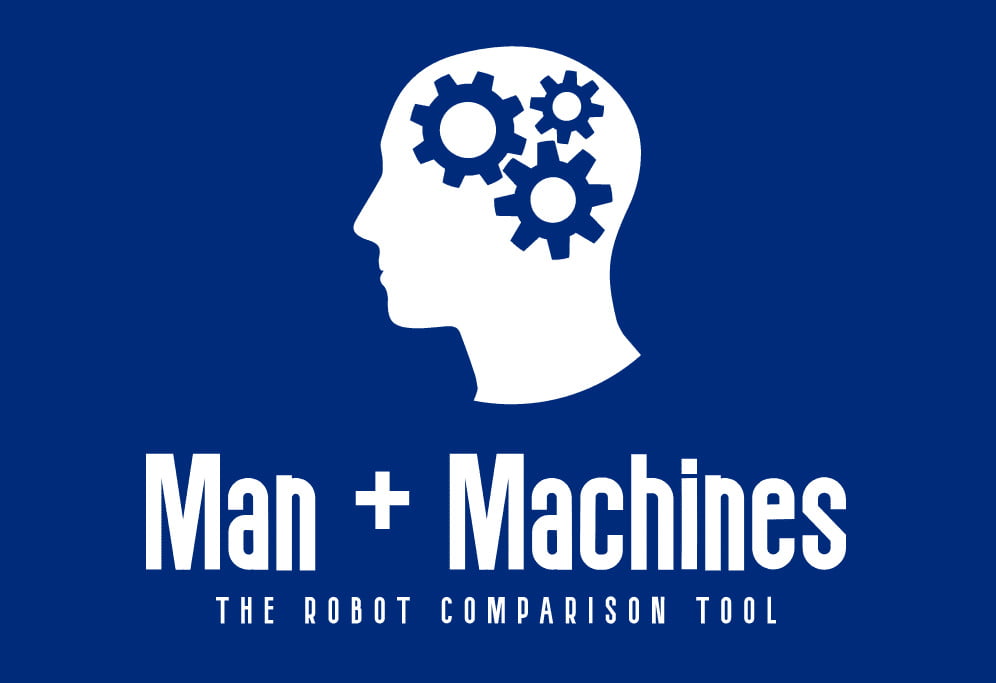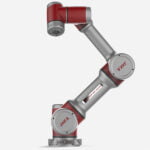What is the story behind Kuka cobots?

As a German company that pioneered industrial robotics, Kuka quickly realized the enormous potential of more compact and safer robots.
As early as 1996, Kuka engineers designed one of the first computer-controlled robots. In 2004, Kuka went one step further by taking up German Aerospace Institute’s concept of a lightweight torque-sensing robot.
Refining the idea, they released their first cobot model, the KUKA LBR 3, which interacted directly with workers in complete safety. Featuring high dexterity and precision in small, free-load applications, it won over many companies at the time.
By introducing its upgraded LBR iiwa cobot series in 2013, Kuka generalized its flagship model with enhanced sensory capabilities and a programmable interface. Thanks to high precision and modularity, the LBR iiwa has found its way into many industrial and non-industrial sectors, including large automotive companies.
Since 2018, its new LBR iisy model, aiming companies new to automation, wants to make Kuka robotic technologies accessible to a wider market.But does it live up to its ambitions?
How to use the Kuka LBR iisy cobot?

After setting up the robot arm on its stand, you can plug in and start the Kuka LBR iisy SmartPad. This smart interface allow you to turn on and initialize your robot. You can calibrate the 7 robot axes, switch the power on and create new work processes.
To define a new program, the workflow is quite intuitive (compared to the Kuka LBR iiwa) thanks to modern IIQA OS. This software is based on an ergonomic, touch-sensitive user interface, making programming accessible to everyone.
Therefore, on the SmartPad Pro, you can easily define the individual sequences of an application to be performed. To get started, assign the input and output to the end effector you are using (pliers, suction cup or screwdriver).
By using hand commands or hand guidance, you can teach the robot the different positions to travel. Hand guidance is done by pressing the triggers on top of the robot arm for optimal safety.
You can define action blocks such as opening the end effector or pause times. To code more complex applications, you can also add logic functions, such as action loops that meet certain conditions.
At the same time, you can check the task positions with the 3D viewer to spot any errors. When you are sure of your program, you can start it by holding down the safety grips.
What are the applications of Kuka LBR iisy?

A little more specialized than LBR iiwa, LBR iisy can still perform specific applications:
- Pick & Place
- Assembly of parts
- Screwing
- Distribution and gluing
- Packaging
- Service and entertainment
What about interaction with the LBR iisy cobot?

As an accessible version of the LBR iiwa model, Kuka delivers one of the most user-friendly and quick to deploy cobot.
Since any employee can set up and configure it in about 10 minutes, this cobot meets the immediate automation needs of industries. At the same time, the iiQKA software embedded in the SmartPad provides an intuitive drag-and-drop experience.
Regarding deployment, users can handle the robot arm with great ease and safety to teach it specific tasks. They can also code more sophisticated applications with visual programming features. Machine-learning applications such as computer vision are however reserved for robot experts.
For the rest, LBR iisy keeps the sensitivity and modularity of its big brother, LBR iiwa. Although we can deplore the limited dimensions and features that prevent more demanding industrial applications, the cobot is made for more meticulous processes, such as the assembly of electronic parts. With its very precise torque sensors, it can handle and adapt its grip autonomously. This also makes it capable of preventing any accidents or collisions. On top of that, its compact and balanced design allows it to be redeployed very quickly.
By working together with other LBR iisy, this cobot can scale sophisticated production processes. Its great ergonomics allows it to cooperate also with human workers, and to benefit from human-machine complementarity.
In short, LBR iisy is a great ally for specialized industries that need smart automation!
Our Ratings
Overall
-
Performance
-
Usabillity
-
Safety
-
Versatility
What to make of LBR iisy series ?
With outstanding user experience, LBR iisy redefines what it’s like to code industrial robots. Combined with quick setup, reliable safety features, and good precision capabilities, it delivers fast performance. So it’s the perfect match for industries new to automation and eager to benefit from early ROI. However, its modest technical specs and versatility might not seduce more specialized and demanding industries.




